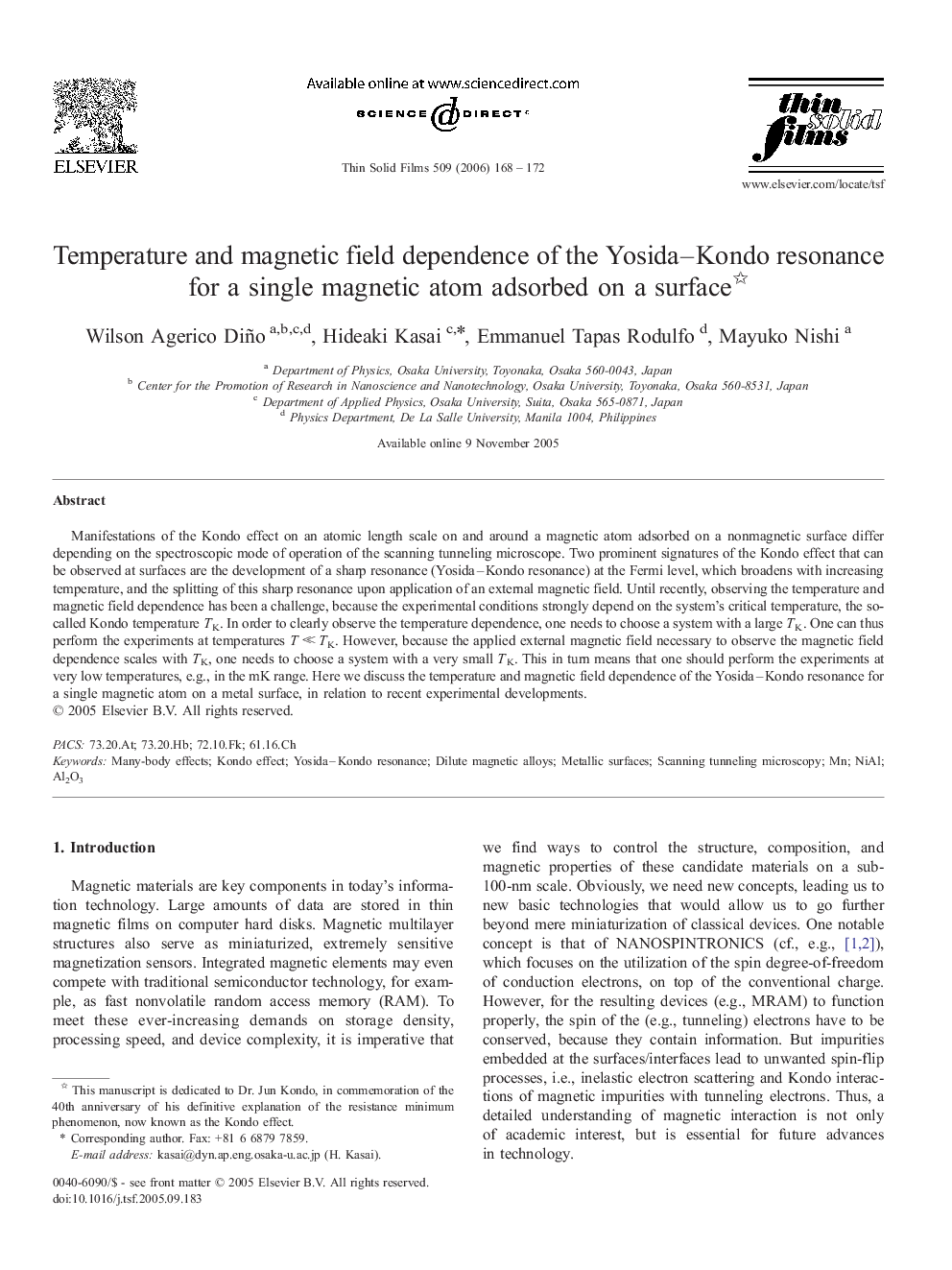| Article ID | Journal | Published Year | Pages | File Type |
|---|---|---|---|---|
| 1675145 | Thin Solid Films | 2006 | 5 Pages |
Manifestations of the Kondo effect on an atomic length scale on and around a magnetic atom adsorbed on a nonmagnetic surface differ depending on the spectroscopic mode of operation of the scanning tunneling microscope. Two prominent signatures of the Kondo effect that can be observed at surfaces are the development of a sharp resonance (Yosida–Kondo resonance) at the Fermi level, which broadens with increasing temperature, and the splitting of this sharp resonance upon application of an external magnetic field. Until recently, observing the temperature and magnetic field dependence has been a challenge, because the experimental conditions strongly depend on the system's critical temperature, the so-called Kondo temperature TK. In order to clearly observe the temperature dependence, one needs to choose a system with a large TK. One can thus perform the experiments at temperatures T ≪ TK. However, because the applied external magnetic field necessary to observe the magnetic field dependence scales with TK, one needs to choose a system with a very small TK. This in turn means that one should perform the experiments at very low temperatures, e.g., in the mK range. Here we discuss the temperature and magnetic field dependence of the Yosida–Kondo resonance for a single magnetic atom on a metal surface, in relation to recent experimental developments.
